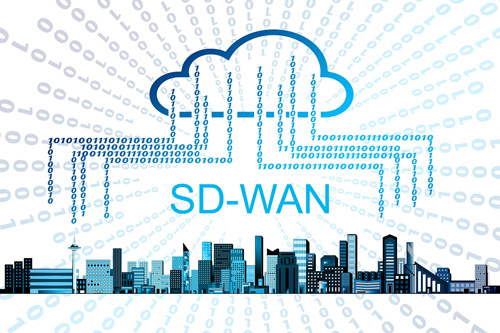Information Technology has changed dramatically in recent years, as has the business enterprises it supports. Most dramatic has been the move to cloud based computing and everything as a service. Last to change, however, has been the way everything connects together. Now that is also being transformed, driven by cost and cloud architectures.

WAN Networking via Individual Lines
Before MPLS, there were dedicated point to point line connections. Every company had one or more T1 lines and eventually DS3 bandwidth and fiber optic OCx circuits. Connecting two business locations together is pretty straightforward. Just order a line that runs directly between them and use that as another portion of your network.
Where it gets complicated and expensive is when you add line after line after line to connect far-flung offices, factories and warehouses. Each of those lines has a monthly lease fee dependent on distance and bandwidth. Each has to be integrated into the network as one big mesh or segmented for traffic control. You soon find yourself becoming a virtual telecom office running your own WAN (Wide Area Network).
The Solid Performance of MPLS
Two competing technologies have been developed to make long distance data connections more available and less costly. The first is the Internet. It’s a public network that is nearly universal and cheap as chips, as they say. The problem is that performance is erratic and security is non-existent.
The other is a smaller private version of the Internet called MPLS or Multi-Protocol Label Switching networks. Instead of one giant internet, you have a multiverse of smaller networks, each operated by an independent commercial vendor. It’s strictly pay to play. Being on one MPLS network generally does not give you access to any other, although there are services that will mesh or combine diverse MPLS networks. More often, you pick the particular MPLS network that has nodes near locations you need to connect.
The beauty of MPLS networks is that performance is guaranteed and security is orders of magnitude above the Internet. In fact, MPLS is sometimes called MPLS VPN just because the unique protocol makes it harder to hack. Your connections are pre-determined so that you can only talk to your own locations. Others have no way to access your data and you don’t even know that you are sharing the network. All of this comes at a price, but it is a much lower price than owning a multitude of leased private lines.
How About That Internet?
For those who don’t have the budget or need to connect with anyone and everyone around the world, especially the general public, the Internet is really the only decent option available. You have access to your customers and suppliers wherever they may be. Connectivity and core bandwidth have improved to the point where performance is generally pretty decent if your applications aren’t too demanding and you don’t mind some variability. Even security can be beefed up to an acceptable level by employing VPN technology such as SSL used in browsers.
SD-WAN, Best of Both Worlds
What SD or Software Defined WAN offers is a hybrid of private line, semi-private MPLS network and public Internet connections all at once. Each has their advantages and disadvantages. Private lines are rock solid, limited to one path only, and pricey. MPLS networks offer a lower cost while maintaining circuit performance and a wide area of connectivity. The Internet is low cost bandwidth and connects just about everywhere.
Can you possibly connect all of these together? That’s the job of SD-WAN. The Software Defined part is the intelligence that manages all of the different lines that you plug into it. You or your service provider explicitly tell the SD-WAN controller that VoIP phone calls go over the private lines or MPLS network and the file backups go over the Internet. If you lose a private line or MPLS connection, the system can create a VPN tunnel through the Internet to route all your traffic instantly. You’ll at least be able to keep doing business, albeit with some performance loss, until your high performance paths are restored.
SD-WAN can be a big money saver by knowing what traffic is either latency sensitive, bandwidth demanding or highly secure, and what traffic isn’t that critical or demanding. It will route packets through the lowest cost routes consistent with acceptable performance. WAN optimization software can also be included as part of the control system to further improve performance and reduce costs.
Have your business needs changed recently or are you suspicious that you may be spending much more than necessary because of the piecemeal way your WAN was constructed over the years? Now would be a good time to take a look at new SD-WAN and other connectivity options that have become available for your business locations.

